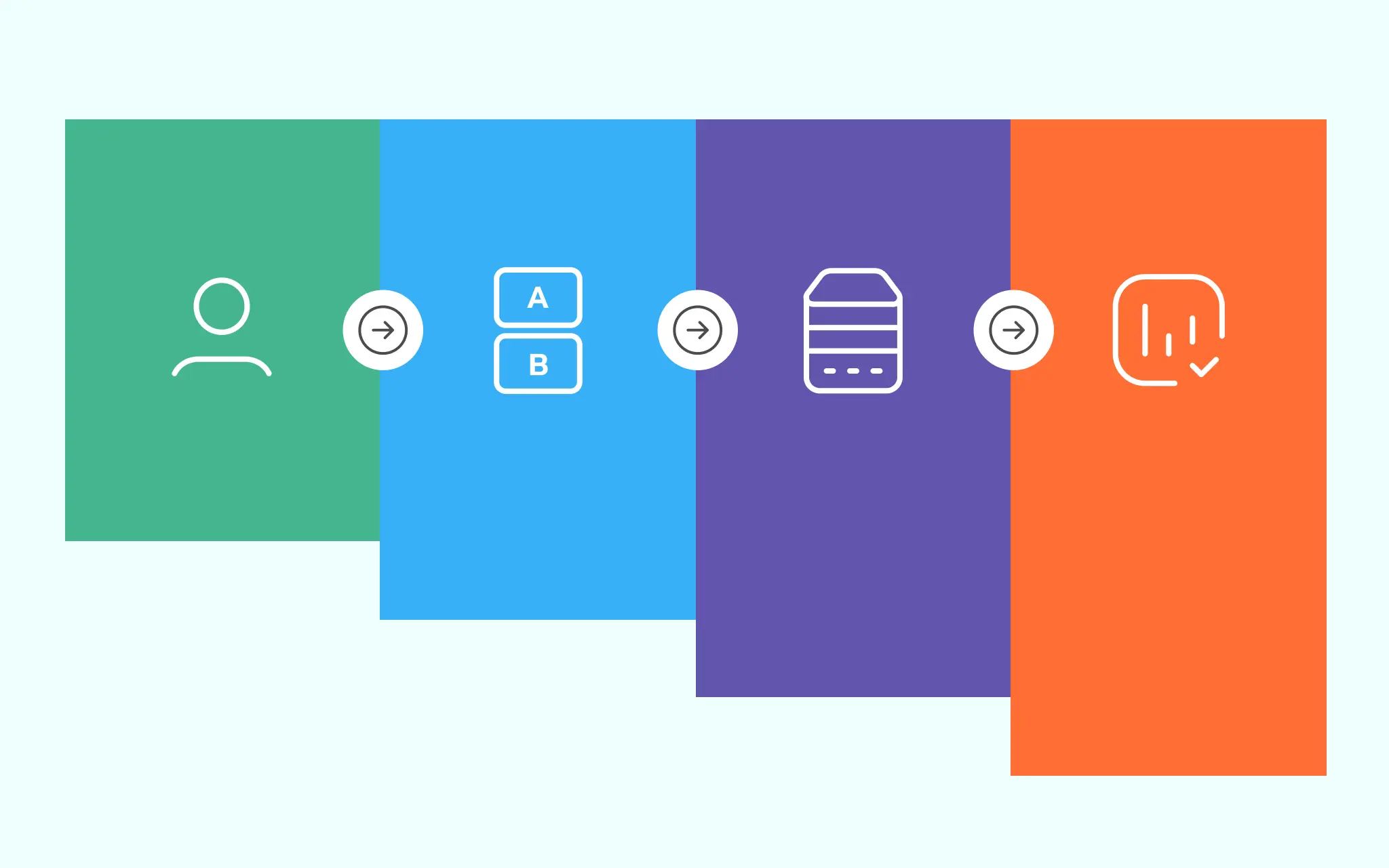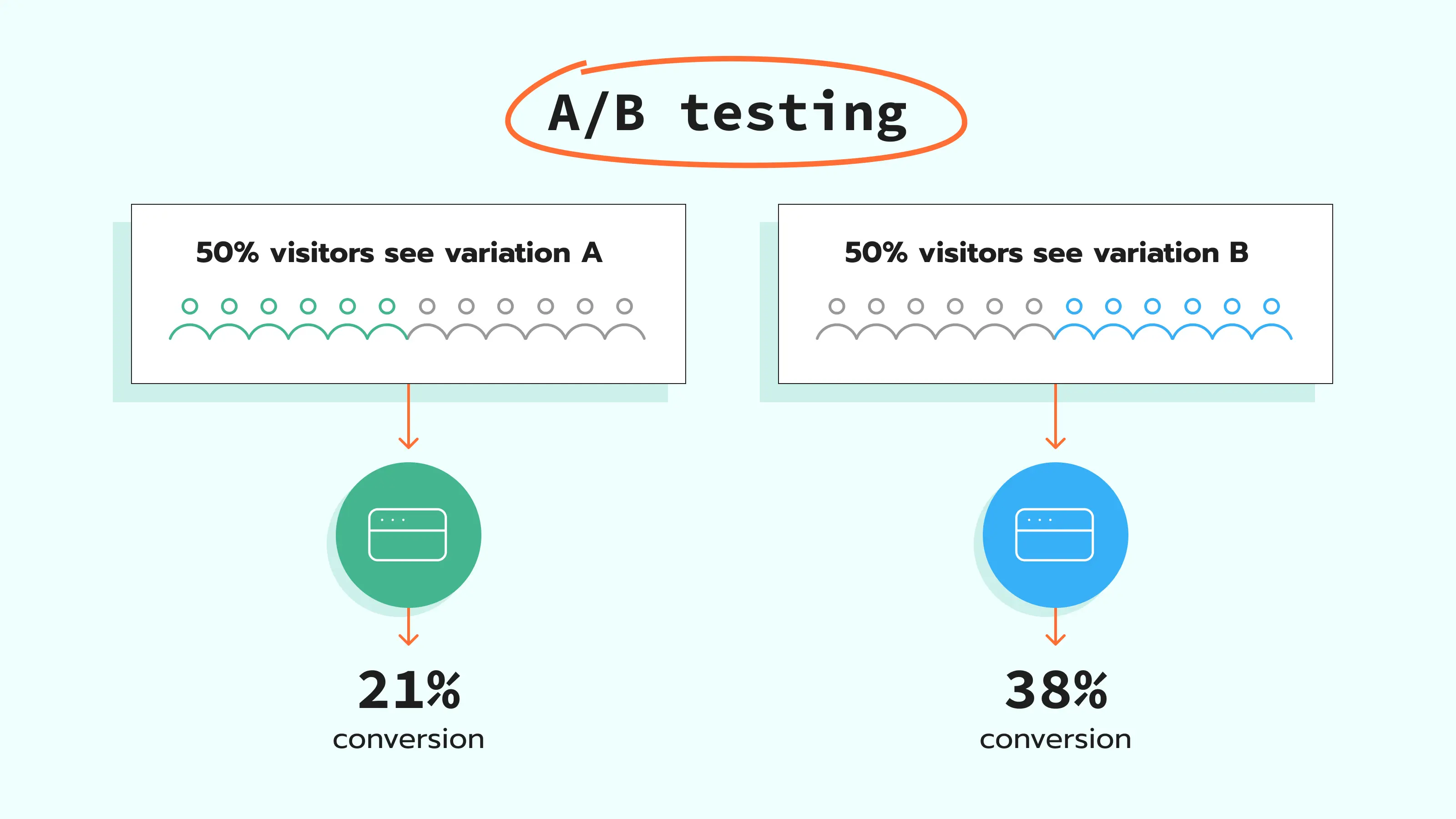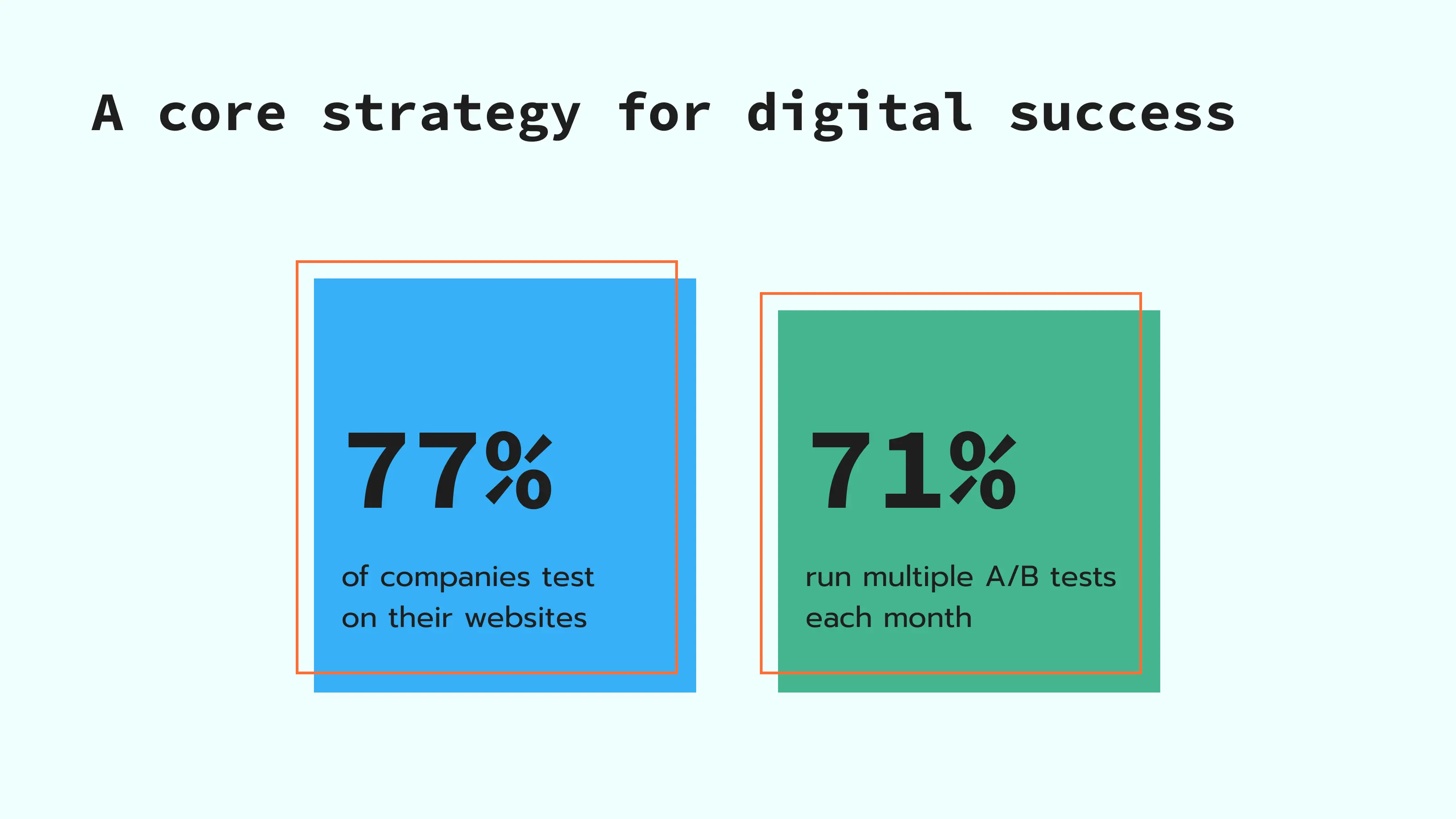
A/B testing only works if your data is accurate. If your results are off, you risk making decisions that cost time and money. Server-side A/B testing helps you run experiments in a way that reflects real user behavior, allowing you to test bigger changes and get more reliable insights. In this post, we’ll explain how server-side testing can improve your A/B experiments and help you make better marketing decisions.
A/B testing, sometimes called split testing, is a method of comparing two different versions of a website, email, app, landing page, or other digital asset. It’s used to determine which version performs better. A/B testing works by randomly showing users two options and using statistical analysis to see which one drives the best results.

In a nutshell, here’s how A/B testing works:
A/B testing can be applied for many purposes, from minor website adjustments like changing a button or headline to major redesigns of a product or service.
By systematically comparing versions with A/B testing, you can:
1. Improve user experience and engagement
2. Make data-driven decisions
3. Improve marketing and business outcomes
4. Additional benefits to consider
It all comes down to this: in 2025, A/B testing remains a core strategy, with 77% of companies testing on their websites and 71% running multiple tests per month.

And now the question is: how do you run A/B tests the right way to get the most value? There are two main approaches: client-side A/B testing and server-side A/B testing. Let’s take a closer look at each.
Server-side A/B testing is a method where the variations of a test are generated on the server before being sent to the user’s browser. This differs from client-side A/B testing, where variations are applied on the client side using JavaScript after the page has loaded.
Both server-side and client-side A/B testing have advantages depending on the scenario. Choosing the right approach depends on the type of results you want to achieve.
Let’s compare the two approaches step by step.
Client-side vs. server-side A/B testing
| Client-side A/B testing | Server-side A/B testing | |
| Operation principle | Experiments and personalization are handled in the user’s browser. JavaScript determines which variation to display and updates the content dynamically. Great for testing front-end elements like UI components, layout changes, and text without server changes. | Experiments and personalization are handled on the server. When a user requests a page, the server generates the variation and delivers it fully rendered to the browser. Ideal for testing backend logic, APIs, and database-driven content. |
| Ease of implementation | Faster deployment; only needs test script insertion or variation configuration. | Slower deployment; backend changes must be implemented and tested before release. |
| Deployment time | Deployment is generally faster because you only need to insert a test script or configure variations in the testing tool. | Deployment takes longer since changes must be implemented and tested in the backend before being released. |
| Performance / Page load impact | May cause flickering or slower page load because variations are rendered after page load. | No flickering; content is fully rendered before reaching the user, providing smoother performance. |
| Controls and flexibility | Limited to front-end elements; harder to test backend features or complex logic. | Complete control over front-end and back-end; can test any feature or workflow. |
| Data accuracy | May have tracking issues due to ad blockers, JavaScript errors, or slow-loading scripts. | More reliable customer data collection because variations are determined and logged on the server. |
| Experiment complexity | Best for simple experiments; limited when testing interactions between front-end and backend logic. | Suitable for complex experiments involving business logic, data processing, or multi-step user flows. |
| Cost | Lower; can often be implemented by marketers or product managers. | Higher; requires developer time and QA resources. |
| Use cases | Headlines, subheadings, button text/colors, layout tweaks, images/videos, minor personalization, simple UI animations, promotional banners. | Core functionality changes (checkout, sign-up), algorithms (recommendations, personalization), pricing logic, API integrations, multi-step flows, feature flags, performance optimizations, security/authentication flows, complex personalization based on server-side data. |
The takeaway is that neither approach is inherently better or worse; they are simply different. Both server-side testing and client-side testing have their advantages and limitations. The right choice depends on your goals, resources, and the complexity of the experiments you want to run.
If your A/B testing needs are more complex, server-side testing offers greater control over backend logic and multi-step user flows. This extra control helps prevent errors and flickering while ensuring more reliable and accurate experiment results. Next, let’s explore how server-side A/B testing can maximize the effectiveness of your experiments.
The main advantage of server-side A/B testing is its ability to capture data accurately and reliably. By handling experiment logic directly on the backend, server-side testing eliminates many of the inconsistencies that can occur in client-side setups.
With server-side A/B testing, you get a clearer picture of what truly drives user behavior, allowing you to make more informed decisions and optimize your experiments effectively.
More accurate and reliable data.
When all experiment logic happens on the backend, server-side A/B testing ensures that every event, whether a click, signup, or purchase, is captured consistently. This includes reliable conversion measurement, so you can precisely see how changes impact key actions.
Consistent experience across devices.
In client-side testing, a user might see one version on mobile and another on desktop. With server-side testing, each user is assigned to a variation before the page loads, ensuring a consistent experience across sessions and platforms. This consistency leads to more accurate results.
Ability to test deeper functionality.
Server-side testing allows you to go beyond layout or copy changes. You can test backend functionality, pricing models, API performance, recommendation engines, and more. It also enables conversion testing to see how backend changes affect sign-ups, purchases, or other key actions.
Better data integration and privacy control.
Server-side A/B testing works directly with your analytics tools and CRM, making it easier to connect test results with key business metrics such as sales, customer retention, and engagement. Because all data stays within your backend systems, it’s more secure and compliant with privacy regulations.
In short, server-side A/B testing provides more reliable results, smoother performance, and the ability to test larger, more meaningful changes. While it requires more setup, it pays off with clearer insights and smarter, data-driven decisions.
Selecting the right platform can have a significant impact on your server-side A/B testing performance, ensuring that experiments run smoothly and results are accurate. Once you decide to move your experiments to the backend, the right tool can make all the difference.
Some platforms are designed for developers who need complete control, while others focus on making testing easier and less technical. Below are five tools that stand out in 2025 for their reliability, flexibility, and performance in server-side A/B testing.
Who should consider moving to server-side testing:
Checklist for transitioning to server-side A/B testing:
This checklist provides a clear overview of the steps involved in moving from client-side to server-side A/B testing and highlights the additional control and accuracy you gain.
Server-side A/B testing isn’t just a technical upgrade; it’s a way to make your experiments smarter, more reliable, and more insightful. By moving the experiment logic to the backend, you gain cleaner data, smoother performance, and the ability to test larger, more meaningful changes that truly impact your business.
To ensure you capture all events accurately and don’t lose data due to ad blockers or browser limitations, it’s also recommended to implement server-side tracking alongside your experiments. This way, you can measure conversions and user actions more reliably and get a full picture of your A/B test results.
While it requires more setup than client-side testing, the payoff is clear: more accurate results, consistent user experiences across devices, and better integration with your analytics and CRM systems.
In short, if you want your A/B tests to reflect real user behavior and support smarter marketing decisions, server-side A/B testing is the way to go.
Comments